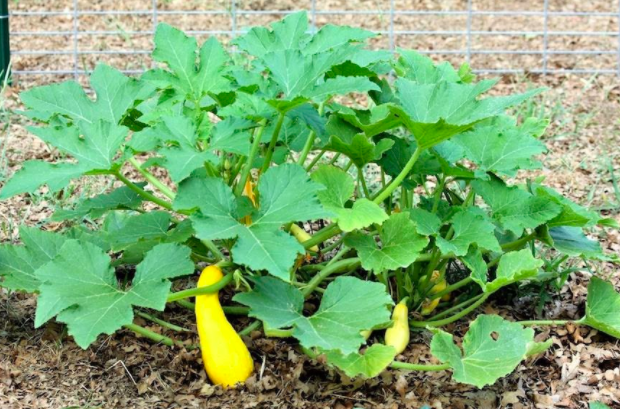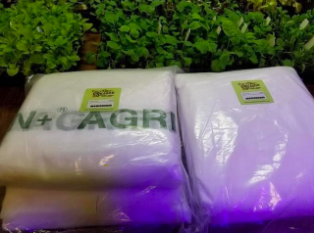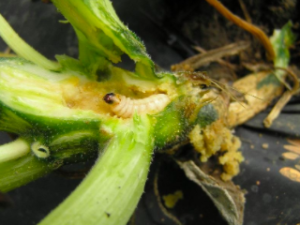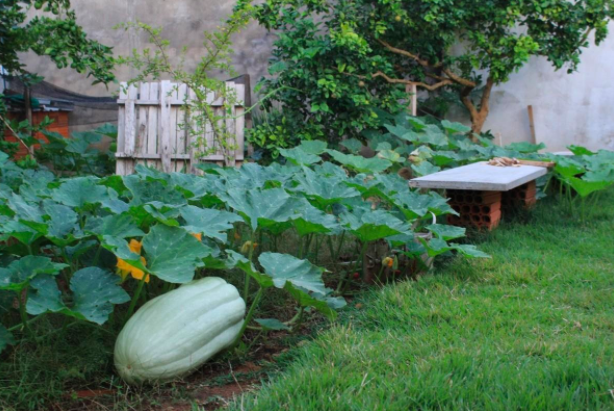
-Pam Scott-
Spring is in full swing. Most of us have our seeds and seedlings tucked safely in the ground as we head full speed towards summer. On these 80-90 degree days it’s hard to imagine that it was only weeks ago that we were hit with a heavy frost. Summer vegetables like tomatoes, peppers, okra, beans, squash, and cucumbers are growing quickly due to warm sunny days and rainy nights. One of the most frequently asked questions we hear these days is “How do I keep bugs and mildew from killing my squash plants?”
Many gardeners struggle with growing cucurbits in our Horticultural Zone due to the high humidity and long breeding season for pests. Squash borers, squash bugs, cucumber beetles, and mildew are the main culprits responsible for failed squash and cucumber crops; however, there are a few simple organic methods you can use to grow healthy, disease resistant, productive plants.
When planting your squash and cucumbers, know that they thrive in sandy, well-drained, slightly acidic soil with a pH of 6-6.5. Cucumbers and squash grow naturally in arid regions of the world, so know that over-watering or insufficient drainage can produce weak plants. They will not do well in clay soil, as they need an extensive root system to thrive. The more developed the root system, the more access to nutrients your plants will have.
Cucurbits can suffer from blossom end rot on their fruit caused by calcium deficiency in the plant, not necessarily in the soil. The soil can have plenty of calcium in it, but without soil microbes the roots can not access the calcium. Supplementing your seedlings with mycorrhizae and compost at planting time will help your plants take up nutrients. Planting well-developed squash and cucumber seedlings instead of seeding directly in the ground may keep the bugs at bay for a while. By putting in transplants very early or very late in the season you may get successful production before or after the height of squash bug season.

It will help to keep crops covered with floating row cover until they flower, at which time you will have to remove the cover for the pollinators to do their work. Squash bugs and cucumber beetles will overwinter in the ground. Rotating your crops is very important, as this gives your plants time to become well established before the bugs find them. Clean up debris from your squash beds at the end of the season and cultivate the soil just before winter, exposing any bugs and larvae to freezing. This will help to reduce the population for the following year.

If your squash plants suffer from borers, try to locate the borer, cut it out of the stem without severing the stem, and replant the vine. On mature plants, bury a few vines that include leaf nodes. The plants will sprout new roots from the nodes and the plant will not die if attacked by squash vine borers.
Crop trapping is another way to beat the bugs. Plant a crop of squash early in the season in the same place as the previous year. The bugs that have overwintered in the soil will attack the crop, and when they do, destroy the crop (including the buds) by burning or bagging it. Start another crop later in the season, somewhere else in the garden, taking advantage of a reduced bug population.
Check the leaves of your squash plants daily and destroy any mature squash bugs, nymphs or eggs you may find. Mature squash bugs resemble stink bugs and will stink when crushed. The nymphs look like tiny leggy mosquitos and can be found on the underside of the leaves. The eggs are found in clusters and are bronze in color. Pull off or collect the eggs by dabbing masking tape on the leaves infested with eggs. Destroy the eggs being careful to not let them fall on the ground as they will still thrive and hatch even if not attached to the plant.
The nymphs can be crushed, collected with tape or sprayed with insecticidal soap. The mature bugs can be crushed or dropped into soapy water. Some people put a board down and check under the board in the morning, finding bugs under the board, they can be easily vacuumed up with a hand vac.
Striped cucumber beetles can be identified by their yellow and black stripes. Spotted cucumber beetles can be identified by the 12 black spots on their yellow backs. If you find them on your plants, collect them with tape, crush them or knock them off into soapy water. Do not spray cucumber plants with neem, insecticidal soaps or oils as this can make the delicate leaves very sensitive to sunlight and it may kill the plant.

Companion planting can be a very effective way to produce healthy strong crops of squash and cucumber. Make sure your garden is pollinator-friendly by planting lots of herbs and flowers that attract pollinators as well as parasitic and predatory bugs. Cucumber and squash plants need multiple visits by their flying friends for adequate pollination. Let your aromatic herbs such as dill, cilantro, fennel, savory, basil, catnip, chamomile and tulsi go to flower, attracting and feeding hoverflies, parasitic wasps, damselflies, lacewings, ladybugs, and bees. Grow plenty of lovage as it is the host plant for parasitic wasps that will destroy cucumber beetles, squash bugs as well as aphids. Growing petunias, nasturtiums and radishes in your squash beds are rumored to deter squash bugs as well.
If none of these methods are working for you, try growing only winter squash. Winter squash, especially Butternut, tend to be more resistant to bugs and disease. Their more fibrous stems make them less of a target for squash vine borers. There are many beautiful and delicious varieties of winter squash to choose from. Delicata, sweet dumpling, acorn, and spaghetti squash are some old favorites.The added bonus of harvesting winter squash in the summer is that they are a great source of nutrients during the winter months.
Powdery mildew is another common problem that can affect your cucurbits. In a short time the leaves of previously vigorous plants will turn white, then brown, and then die. You can avoid this by planting your seedlings farther apart allowing for more air circulation. Water with only drip irrigation, leaving the leaves dry. Spraying the leaves with 1 tsp baking soda to 1 qt water will raise the ph, inhibiting fungal growth. Powdery mildew will often occur during the fruiting stage of the plant when the plant is putting more effort into fruit production and less into leaf production and defence. A small amount of this is harmless, and the older affected leaves can be plucked off. Sulphur and neem oil are not recommended for squash and cucumber plants as they can burn their delicate leaves.
Fifth Season Gardening carries all the plant seedlings, nutrients, organic pest and disease control products you will need to have a successful and productive gardening season. Check out our online web and curbside offerings at fifthseasongardening.com.


Leave a Reply